Various types of protection are used in electrical installations to protect electrical circuits, devices or people against the (often tragic) effects of network malfunction, e.g. electric shock. One of the protective devices commonly used by electricians is a residual current device, commonly known as a differential switch. What exactly is this device? When to equip the installation with them? Which type of differential should you choose? And how often is it recommended to replace it? Everything you need to know about differential circuit breakers can be found in the article below, and you can find virtually every type of residual current circuit breaker at the Onninen wholesaler. We invite you!
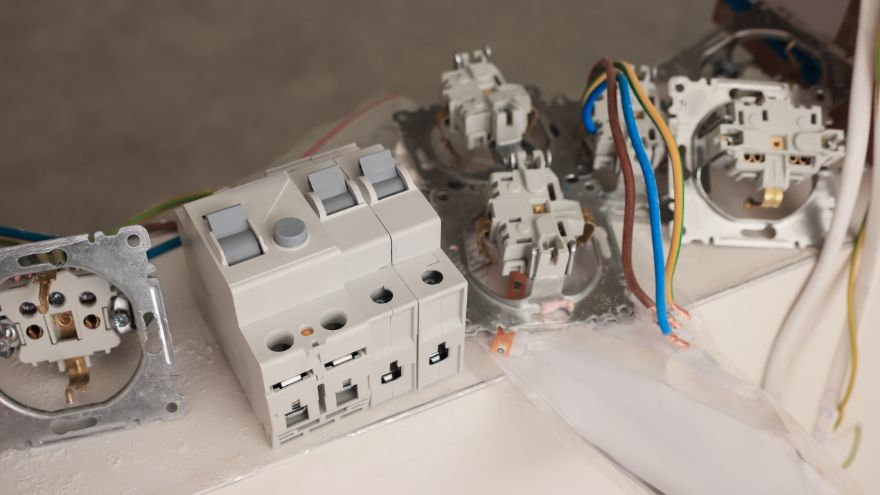
Check residual current circuit breakers at the Onninen wholesaler
What is a differential?
A residual current device is the common name for a residual current device. This is an electrical safety device that prevents electric shock to humans during direct and indirect contact, minimizes the effects of equipment damage and reduces the risk of fire.
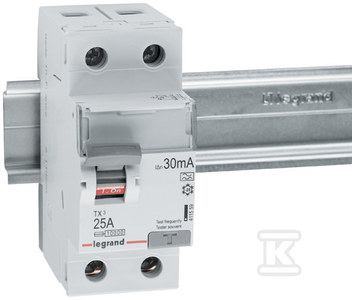 The phase and neutral wires pass through the differential, e.g. in a single-phase circuit there will be a phase wire and a neutral wire. Under normal conditions, the current in the circuit has the same value as the current flowing through the neutral wire. In the event of an installation failure, the current "escapes" onto the casings of electrical devices, due to which the current values in the phase conductors and the neutral conductor begin to differ from each other (this difference is called residual current). When the electric current flowing out of a circuit is not equal to the current flowing in, the differential switch should detect these abnormalities and immediately disconnect the circuit. The power is turned off automatically.
The phase and neutral wires pass through the differential, e.g. in a single-phase circuit there will be a phase wire and a neutral wire. Under normal conditions, the current in the circuit has the same value as the current flowing through the neutral wire. In the event of an installation failure, the current "escapes" onto the casings of electrical devices, due to which the current values in the phase conductors and the neutral conductor begin to differ from each other (this difference is called residual current). When the electric current flowing out of a circuit is not equal to the current flowing in, the differential switch should detect these abnormalities and immediately disconnect the circuit. The power is turned off automatically.
Other commonly used names of the differential circuit breaker are: residual current fuse, electric shock protection circuit breaker, RCD switch and RCCB circuit breaker from the abbreviations of the English names ( residual current device and residual current circuit breaker, respectively) .
When is it worth using a residual current device?
Residual current circuit breakers are used in electrical installations as additional protection against electric shock. They occur in TN-S network systems (most often in houses and apartments), TN-CS (on a section with a PE protective conductor and a neutral conductor separated) and TT. They appear rarely in IT networks. Residual current circuit breakers must not be implemented in TN-C installations because the PE and N conductors are not separated in them, so the differential circuit breakers would not function properly.
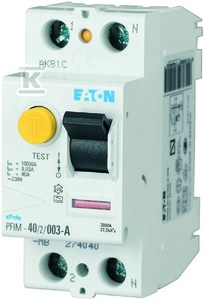 The differential detector detects only a small current leak - one that would not trigger the overcurrent protection. However, the device does not provide absolute protection, i.e. 100% protection regardless of the situation. When you touch a protective conductor with current flowing to earth, the risk of electric shock still exists, but most often it is much smaller than in the case of contact with an unprotected conductor and usually does not pose a threat to human life or health.
The differential detector detects only a small current leak - one that would not trigger the overcurrent protection. However, the device does not provide absolute protection, i.e. 100% protection regardless of the situation. When you touch a protective conductor with current flowing to earth, the risk of electric shock still exists, but most often it is much smaller than in the case of contact with an unprotected conductor and usually does not pose a threat to human life or health.
Building regulations and the requirements of Polish Standards relating to electrical installations and electrical devices provide information on when it is worth using residual current circuit breakers and on what parameters. The obligation to provide protection against electric shock is regulated by § 180 of the Regulation of the Minister of Infrastructure of April 12, 2002 on the technical conditions to be met by buildings and their location.
What power should the differential have?
The basic parameter of each differential device is the rated differential current I Δn . This is the value declared by the manufacturer (10, 30, 100, 300, 500 mA or 1 A) at which, under specific conditions, a given residual current device should trip. Additionally, the residual current circuit breaker is structurally adapted (including the size and cross-section of the current circuits and the selection of cable terminals) to the specific value of the rated current. You can choose from, for example, a 25A differential or a 40A differential . The differential power is selected by a qualified electrician, taking into account, among others: type of installation and its load, as well as legal provisions and standard requirements for a given location.
Check residual current circuit breakers at the Onninen wholesaler
What are the differences between differentials?
There are various types of residual current circuit breakers available on the market.
Due to sensitivity (tripping current I Δn ), circuit breakers are distinguished:
- highly sensitive – they respond to current below 30 mA, so they are most often used in houses and apartments;
- medium sensitivity - reacting to current from 30 to 500 mA;
- low sensitivity - reacting to current above 500 mA, used mainly in industrial facilities.
Depending on the types of leakage currents detected, the type of triggering or the sensitivity to residual current, several basic types of residual current circuit breakers can be distinguished:
-
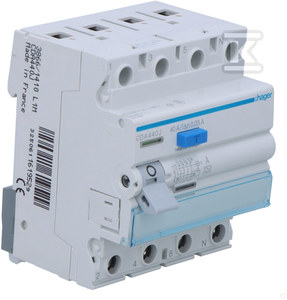 AC type - AC RCD switches are sensitive to sinusoidal alternating residual currents, this is the most popular type of differential switches in our country;
AC type - AC RCD switches are sensitive to sinusoidal alternating residual currents, this is the most popular type of differential switches in our country; - type A - type A switch is sensitive to the flow of sinusoidal and rectified pulsed current (note, type A is not suitable for installation in circuits responsible for powering e.g. inverters);
- type B - type B differential device is intended for more advanced electrical installations, it detects sinusoidal alternating current, direct current smoothed to a frequency of 1000 Hz and pulsating direct current;
- type F – type F circuit breakers detect sinusoidal alternating current with variable frequency characteristics, therefore they are implemented together with converters frequency.
Depending on the number of poles, residual current circuit breakers are divided into:
- bipolar – used in single-phase circuits (hence the name 1-phase differential );
- four-pole – used in three-phase circuits with a neutral wire (hence the name 3-phase differential ).
Due to the built-in overcurrent protection, residual current circuit breakers are distinguished:
- RCCB - without protection,
- RCBO - with protection.
When choosing a residual current device, you should look at the entire electrical installation. In particular, the expected values of leakage current, the planned load of the installation and the type of receivers in the circuit must be taken into account. The functions that residual current circuit breakers are to perform in the protected circuit are also important. It does not necessarily have to be only anti-shock protection. If you are not a professional, it is worth seeking advice from a licensed electrician.
How often should the differential be replaced?
Residual current circuit breakers in electrical installations should be periodically inspected to ensure proper protection of electrical equipment and, above all, the safety of household members and employees. There is a standard "TEST" button on the differential. After pressing it, an installation failure is simulated, and thus a current leakage, which allows you to verify the efficiency of the device. If the current is not cut off automatically and immediately, it is recommended to replace the differential. It is best to contact an electrician. The testing frequency is determined by the manufacturers of residual current devices. Under favorable environmental conditions, it is usually sufficient to repeat the test once a year.
Is a differential a fuse?
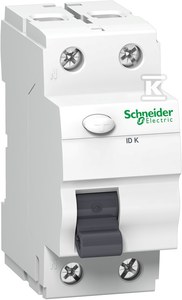 NO. Residual current circuit breakers and electrical fuses (also called fuses/circuit breakers and colloquially "circuit breakers") are two different types of protection used in electrical circuits. The fuse protects the installation and electrical receivers against the effects of excessive electrical energy - overload or short circuit, by interrupting the flow of current. Its use allows you to effectively prevent damage to the installation and electrical equipment connected to it. The differential switch does not protect against overheating or short circuiting of devices, but it detects current leakage, preventing "kicks" that are dangerous to human health and life. Protection should be comprehensive - based on both residual current circuit breakers and overcurrent circuit breakers. There should be at least one fuse for each differential.
NO. Residual current circuit breakers and electrical fuses (also called fuses/circuit breakers and colloquially "circuit breakers") are two different types of protection used in electrical circuits. The fuse protects the installation and electrical receivers against the effects of excessive electrical energy - overload or short circuit, by interrupting the flow of current. Its use allows you to effectively prevent damage to the installation and electrical equipment connected to it. The differential switch does not protect against overheating or short circuiting of devices, but it detects current leakage, preventing "kicks" that are dangerous to human health and life. Protection should be comprehensive - based on both residual current circuit breakers and overcurrent circuit breakers. There should be at least one fuse for each differential.
Differentials at the Onninen wholesaler
At the Onninen electrical wholesaler you will find a wide range of AC, A and other types of residual current circuit breakers. We offer certified, standard-compliant products from renowned manufacturers and suppliers. The options available are:
as well as various accessories in the field of modular equipment. We also encourage you to check out other security features available in our range.
You don't know which differential, fuse or surge arrester will fit your network system? Onninen experts provide professional support in selecting the optimal type of residual current circuit breakers and other elements. Write, call or visit the nearest branch. We will try to answer every question. Are you a professional? Electricians can count on special terms of cooperation.
Check residual current circuit breakers at the Onninen wholesaler